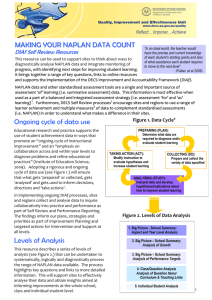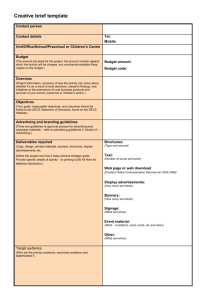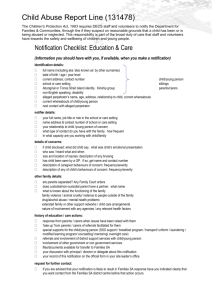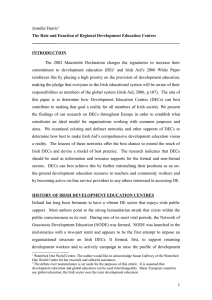DECS: A System for Distributed Enactment of Composite Web Services
advertisement
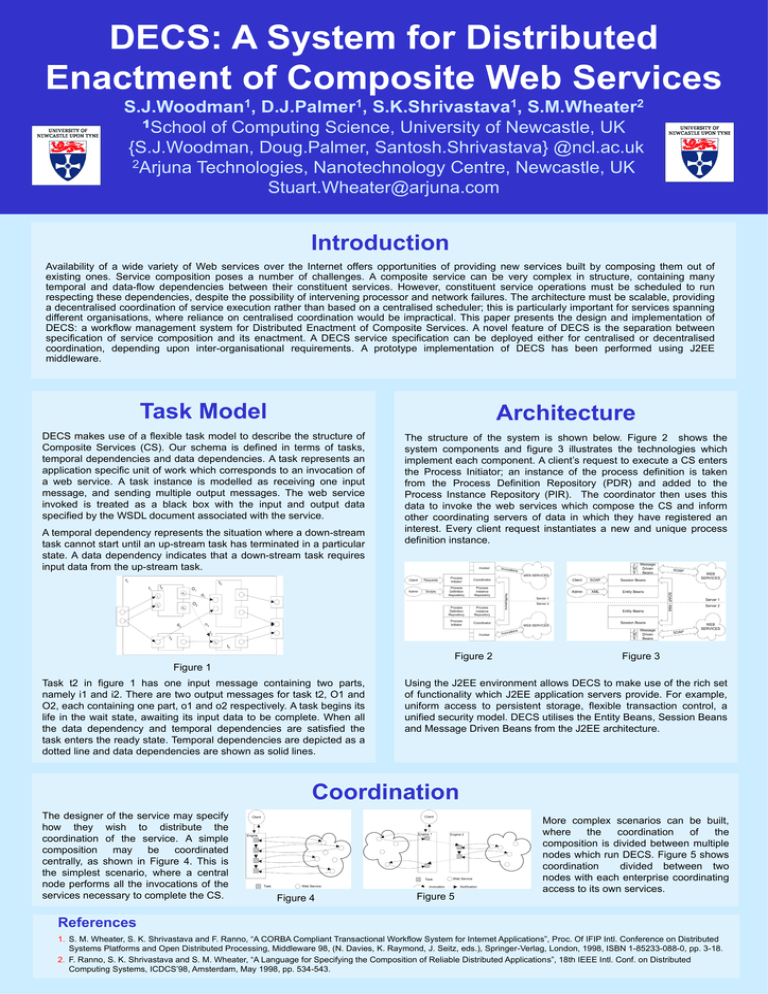
DECS: A System for Distributed
Enactment of Composite Web Services
1
S.J.Woodman ,
1School
1
D.J.Palmer ,
1
S.K.Shrivastava ,
2
S.M.Wheater
of Computing Science, University of Newcastle, UK
{S.J.Woodman, Doug.Palmer, Santosh.Shrivastava} @ncl.ac.uk
2Arjuna Technologies, Nanotechnology Centre, Newcastle, UK
Stuart.Wheater@arjuna.com
Introduction
Availability of a wide variety of Web services over the Internet offers opportunities of providing new services built by composing them out of
existing ones. Service composition poses a number of challenges. A composite service can be very complex in structure, containing many
temporal and data-flow dependencies between their constituent services. However, constituent service operations must be scheduled to run
respecting these dependencies, despite the possibility of intervening processor and network failures. The architecture must be scalable, providing
a decentralised coordination of service execution rather than based on a centralised scheduler; this is particularly important for services spanning
different organisations, where reliance on centralised coordination would be impractical. This paper presents the design and implementation of
DECS: a workflow management system for Distributed Enactment of Composite Services. A novel feature of DECS is the separation between
specification of service composition and its enactment. A DECS service specification can be deployed either for centralised or decentralised
coordination, depending upon inter-organisational requirements. A prototype implementation of DECS has been performed using J2EE
middleware.
Task Model
Architecture
DECS makes use of a flexible task model to describe the structure of
Composite Services (CS). Our schema is defined in terms of tasks,
temporal dependencies and data dependencies. A task represents an
application specific unit of work which corresponds to an invocation of
a web service. A task instance is modelled as receiving one input
message, and sending multiple output messages. The web service
invoked is treated as a black box with the input and output data
specified by the WSDL document associated with the service.
The structure of the system is shown below. Figure 2 shows the
system components and figure 3 illustrates the technologies which
implement each component. A client’s request to execute a CS enters
the Process Initiator; an instance of the process definition is taken
from the Process Definition Repository (PDR) and added to the
Process Instance Repository (PIR). The coordinator then uses this
data to invoke the web services which compose the CS and inform
other coordinating servers of data in which they have registered an
interest. Every client request instantiates a new and unique process
definition instance.
A temporal dependency represents the situation where a down-stream
task cannot start until an up-stream task has terminated in a particular
state. A data dependency indicates that a down-stream task requires
input data from the up-stream task.
Figure 2
Figure 3
Figure 1
Task t2 in figure 1 has one input message containing two parts,
namely i1 and i2. There are two output messages for task t2, O1 and
O2, each containing one part, o1 and o2 respectively. A task begins its
life in the wait state, awaiting its input data to be complete. When all
the data dependency and temporal dependencies are satisfied the
task enters the ready state. Temporal dependencies are depicted as a
dotted line and data dependencies are shown as solid lines.
Using the J2EE environment allows DECS to make use of the rich set
of functionality which J2EE application servers provide. For example,
uniform access to persistent storage, flexible transaction control, a
unified security model. DECS utilises the Entity Beans, Session Beans
and Message Driven Beans from the J2EE architecture.
Coordination
The designer of the service may specify
how they wish to distribute the
coordination of the service. A simple
composition may be coordinated
centrally, as shown in Figure 4. This is
the simplest scenario, where a central
node performs all the invocations of the
services necessary to complete the CS.
Figure 4
Figure 5
More complex scenarios can be built,
where
the
coordination
of
the
composition is divided between multiple
nodes which run DECS. Figure 5 shows
coordination
divided between two
nodes with each enterprise coordinating
access to its own services.
References
1. S. M. Wheater, S. K. Shrivastava and F. Ranno, “A CORBA Compliant Transactional Workflow System for Internet Applications”, Proc. Of IFIP Intl. Conference on Distributed
Systems Platforms and Open Distributed Processing, Middleware 98, (N. Davies, K. Raymond, J. Seitz, eds.), Springer-Verlag, London, 1998, ISBN 1-85233-088-0, pp. 3-18.
2. F. Ranno, S. K. Shrivastava and S. M. Wheater, “A Language for Specifying the Composition of Reliable Distributed Applications”, 18th IEEE Intl. Conf. on Distributed
Computing Systems, ICDCS’98, Amsterdam, May 1998, pp. 534-543.



